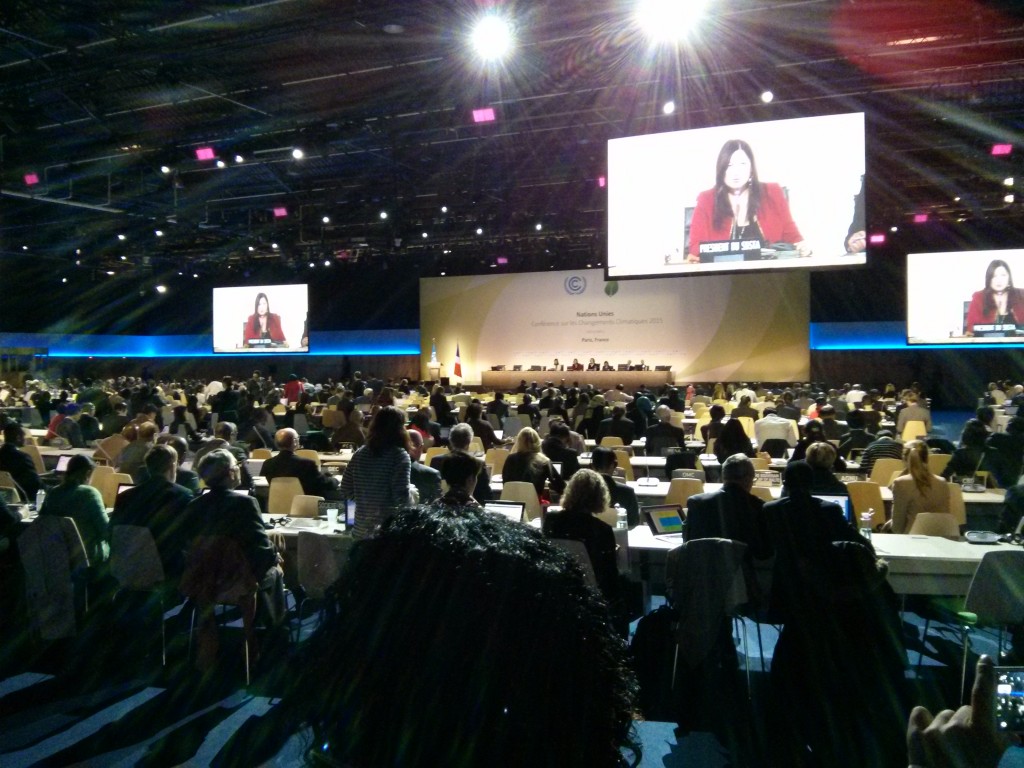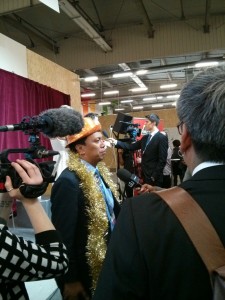** Will upload voice recordings and videos to youtube channel at some point. Files are too large to process through wordpress
Today I tried branching out from the side event proceedings (which were getting increasingly stale) to try and mingle with delegates, observers, and participants from other countries and try my luck in the plenaries. This worked out far better than I imagined it would. Although there were individuals from all sorts of different backgrounds, everyone was open to talking about their problems and solutions though asking for hopes seemed to be a bit of a contentious issue. I managed to land some solid conversations and even interviews with quite a few people. I talked to a geologist from the Comoros about the effects of climate change on their nation as island-state, a lady from the French delegation about how France engages civil society in matters involving environmental initiatives, and a participant from Denmark from the Nordic Council of Ministers. I also got to hear about how Saudi Arabia is pursuing Carbon Sequestration technologies (most of which ironically involve producing byproducts to process more fossil fuels).

Additionally, today seemed to be a good day for sighting some higher level delegates. I recorded (Coming soon) some remarks by Kevin Rudd, the former PM of Australia who dispensed some helpful advice on pushing the political agenda for the purpose of combating climate change, and got to piggyback onto an ongoing interview with the President of Kiribati, Anote Tong, who apparently had been in some unsatisfying meetings with President Obama earlier on in the COP (also coming soon). Also, in addition to having a satisfying day connecting with a broader set of individuals, I attended the “fossil of the day” award mock ceremony which is usually held to highlight “awards” to the Parties of the day who were the most obstructive to the progress of negotiations. Today, however was different. Instead of a fossil, the Phillippines and Costa Rica were lauded for being part of the Climate Vulnerable Forum (CVF) with other LDCs such as Bangladesh and Afghanistan to declare their intentions through the Manila-Paris agreement adopted on November 30th to move to 100% renewable energy and decarbonize their economies by 2050 in an attempt to limit temperature rises to 1.5 degrees Celsius. Pretty exciting for Day 2.

Interesting how it still comes down to people and communication. What is a LDC? less developed country? What is your take on the discussion with professor Jensen about let me tell you a story? Do you think there are standard “stories” about global climate change that will catch the attention and therefore then the action of regular people and policy makers? How would you begin to help people have more productive discussions?
Hi Nina,
Yes an LDC is defined by the COP as a Least Developed Country which are marked by low gross national income (GNI) and a higher amount of economic vulnerability. My take on using stories to effectively convey the impacts of climate change is that is completely essential to utilize stories, whether they be anecdotal, metaphorical, or otherwise. Stories are simply more engaging and intuitive to people than straight numbers and facts. I don’t think it is possible to truly “standardize” stories about global climate change because, as mentioned in the discussion in Eric’s post, not every story will resonate with the every audience. I think it will take a broad compilation of stories from individuals around the world of all different backgrounds who have been affected by climate change to move enough people to action. However, I do believe that there are couple specific elements that should be included whenever you are crafting narratives in order to more effectively lead people to have more productive discussions. First of all considering the audience is key, and I am not just talking about the size or venue. Designing your story from the perspective of people you expect to be in a prospective audience is very important for getting the proper level of engagement and setting up a crowd receptive to your ideas. Secondly, to get the discussions started, I would probably focus on incorporating the facts in an interesting (or at least smooth) way along with “hanging thoughts” and conversation starting ideas that you want the audience to stew over. I feel that creating this “cliffhanger” scenario is a good way to entice further discussions, and by leaving the audience. If the story is crafted well, the audience will naturally want to play along, and fill in the ending in their own minds. By providing them with the facts, they have a platform for doing this, and then it is simply a question of getting them to discuss their ideas based on the common background provided by the story.
It’s great how you all are able to discuss problems and solve them as a group, even though y’all come from different backgrounds and ethnicity’s. Nina answered all the questions that we had. Great Job!!!